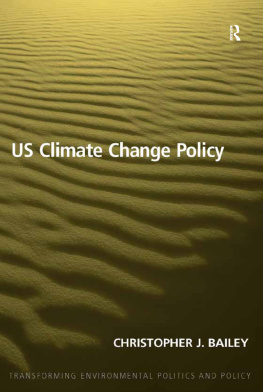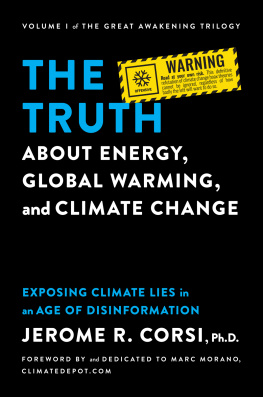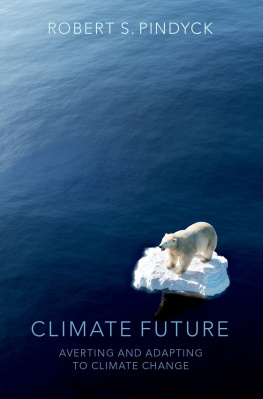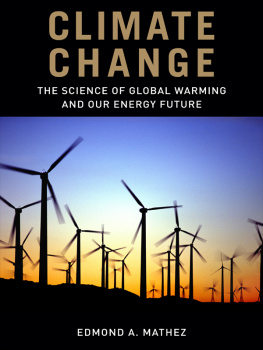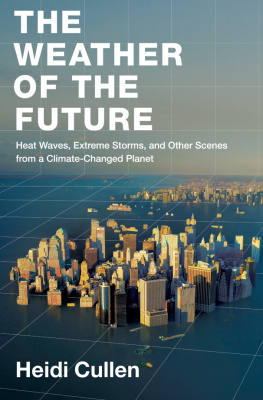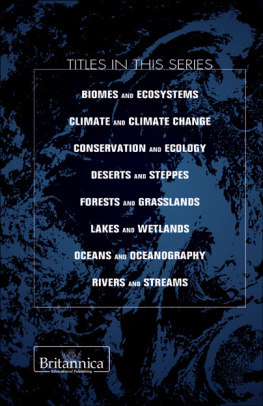Climate Central
Where Climate Is Heading fromGlobal Weirdness
Global Weirdness was produced collectively by scientists and journalists at Climate Central, a nonprofit, nonpartisan science and journalism organization. The book was written by Emily Elert and Michael D. Lemonick; prior to external scientific peer review, it was reviewed by staff scientists Philip Duffy, Ph.D. (Chief Scientist), Nicole Heller, Ph.D. (ecosystems and adaptation), Alyson Kenward, Ph.D. (chemistry), Eric Larson, Ph.D. (energy systems), and Claudia Tebaldi, Ph.D. (climate statistics).
www.climatecentral.org
Where Climate Is Heading
from Global Weirdness
Climate Central
A Vintage Short
Vintage Books
A Division of Random House LLC
New York
Copyright 2012 by Climate Central
All rights reserved. Published in the United States by Vintage Books, a division of Random House LLC, New York, and in Canada by Random House of Canada Limited, Toronto, Penguin Random House companies. Published as part of Global Weirdness in the United States by Vintage Books, a division of Random House LLC, New York. Originally published in hardcover in the United States by Pantheon Books, a division of Random House LLC, New York, in 2012.
Vintage and colophon are registered trademarks of Random House LLC.
The Cataloging-in-Publication Data for Global Weirdness is available from the Library of Congress.
Cover design by Joan Wong
Vintage eShort ISBN: 978-1-1019-1034-4
www.vintagebooks.com
v3.1_r1
Contents
Computer Models Arent Perfect.
This Isnt a Big Surprise.
Computer models simulate things in the real world. Engineers use them to design cars, airplanes, and other things we depend on every day. Climate models use basic scientific equations about energy and matter to simulate the planets atmosphere, oceans, land ice, sea ice, and vegetation coverage. Climate scientists use the models to help them understand how our climate works, how it behaved in the past, and how humans are affecting it. They also use them to explore what the climate might be like decades from now.
Of course, theres no way to test these predictions directly (unless we wait for decades, by which time we wouldnt need them anymore). But there are still ways to figure out how well the models work, because models arent just used to look at future changes.
Models can be tested, for example, to see how accurately they simulate todays climatehow closely they match up with the average patterns of temperature or precipitation or air pressure that we observe in the real world.
Scientists also test their models by simulating past climate changes, say, between 1850 and today. When they take into account natural variations in the suns intensity, aerosols (that is, tiny particles) from volcanic eruptions and industrial pollution, and greenhouse gases emitted by humans, the models reproduce the rise in both the magnitude and the spatial pattern of global temperature observed over the twentieth century pretty accurately. They also reproduce the changes weve actually observed in sea ice, ocean temperature, the hydrological (that is, water) cycle, and so on. This increases our confidence that the models are a reasonably good representation of the real climate, and theyre taking all of the most important factors into account.
Models have also been around long enough to be tested with actual predictions. In 1988, a climate scientist at NASA used a basic model to simulate changes in temperature over the coming couple of decades. Over the next twenty years or so, the real-world climate acted very much like the simulation. And that was using a model thats much more primitive than those in use today.
Some people are skeptical about climate models because they know that weather forecasts are good for only a few days into the future. Even so, scientists think they can project climate decades ahead (with one important caveat: nobody knows what future greenhouse-gas emissions, deforestation, and other human factors driving climate change will be over the next century).
Once they make an assumption about future greenhouse emissions, however, modelers are confident that models give useful information about future climate. If that sounds impossible, its because many people imagine that climate modeling is just an extended type of weather forecasting. But while climate models are related to weather models, theyre doing different things.
To understand the difference, think about trying to predict whether a coin flip will come up heads or tails. Its impossible to do that for any single flip (which is something like a weather forecast for next month). But you can safely predict that if you repeat the coin toss a thousand times, you will get about five hundred heads and five hundred tails. Weather is about single events; climate is about long-term averages. While we know we cant predict the timing of specific weather events far in the future, we should be able to predict long-term averages (and other properties like climate variability).
Still, models arent perfect. Its still impossible, for example, to get all the complexities of cloud behavior into the models in a realistic way. So climate scientists are always looking for new ways to refine their models and to estimate how far off they might be. Theyre making progress, but only slowly. In the meantime, decision makers who want to use information about future climate have to make do with imperfect information.
Since We Dont Know Whether and How Much People Might Cut Greenhouse-Gas Emissions, Its Hard to Know Exactly How High the Temperature Will Go by 2100.
Yogi Berra is credited with having said that predictions are hard to make, especially about the future. Its true, but climate scientists do their best anyway. Computer models can do a pretty good job of simulating real-world events, but they cant ever replicate them exactly (youve probably noticed this firsthand if youve ever seen a computer-animated human in motion). Even well-understood phenomena, like the physics of flight, cant be simulated perfectly, but aeronautical engineers know they can rely on flight simulations because they know how closely their models represent the real world.
Similarly, models of the planets climate cant simulate todays climate precisely, but they do a good job of approximating it (and theyre getting better, as the models are continually improved and tested). The places where models and reality disagree help point out the areas of uncertainty.
These uncertainties come from the fact that the local climate is influenced by many different things, including ocean currents, ice cover, vegetation, and cloud cover, to name just a few. As temperatures rise, each of these can change, leading the other parts of the system to react, leading to still more changes. Right now, scientists cant reproduce all of these changes in their models, so they have to make approximations. For instance, cloud cover is likely to change as the temperature goes up. The changes could lead to extra warming, or to some cooling, or some of both. Scientists arent certain at this point about what the total effect will be, because cloud processes take place on too local a scale for models to handle. The balance of observational evidence so far suggests that clouds are likely to cause some extra warming. But its unclear how large this effect will be.
Since the models cant yet give a dead-on representation, scientists know they cant represent the future climate flawlessly either. Thats why projections for warming and sea-level rise and other changes are given as ranges, not specific numbers. But even if the models were perfect, they still wouldnt be able to tell us how much the climate will change over the next century to the number. Thats because the amount of climate change will depend on human actions. For the last several decades, human greenhouse-gas emissions have been the biggest human-caused force changing global climate.


